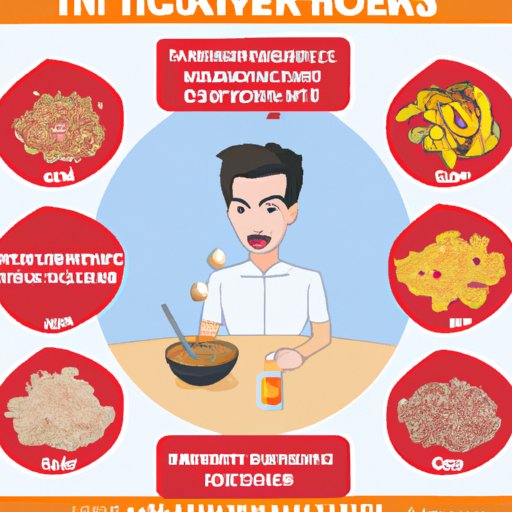Introduction
Irritable Bowel Syndrome, or IBS, is a digestive disorder that affects the large intestine. It is estimated that up to 20% of Americans have IBS, although it is often underdiagnosed. Symptoms of IBS can include abdominal pain, cramps, bloating, diarrhea, constipation, and gas. While there is no one-size-fits-all approach to managing IBS, making changes to your diet may help reduce symptoms.
This article will explore how to eat with IBS. We’ll discuss understanding IBS triggers, eating smaller meals more frequently, avoiding certain foods, choosing high-fiber foods, and staying hydrated. By following these tips, you can make dietary adjustments that may help reduce your IBS symptoms.
Understand IBS Triggers
Not everyone with IBS has the same triggers, so it’s important to understand which foods and beverages may be causing your symptoms. Keeping a food diary can help you identify which foods are triggering your IBS symptoms. Be sure to record what and when you’re eating, as well as any symptoms you experience afterwards. After several weeks, look for patterns in your food diary to see if there are any connections between what you’re eating and your symptoms.
Once you’ve identified some potential IBS triggers, adjust your diet accordingly and continue to monitor your symptoms. You may want to consult with a registered dietitian or your doctor to help you create an individualized plan.
Eat Smaller Meals
Eating smaller meals more frequently throughout the day can help ease IBS symptoms. This is because larger meals can cause your stomach to stretch, which can lead to cramping, bloating, and other symptoms. Eating smaller meals also helps keep your blood sugar levels steady, which can help reduce abdominal pain.
Try to eat five to six small meals per day, rather than three large meals. If possible, spread out your meals evenly throughout the day so that you’re not going long periods of time without eating. Additionally, try to stick to regular meal times to keep your digestion on a schedule.
Avoid Certain Foods
There are certain foods that are known to trigger IBS symptoms. Common food triggers include dairy products, fatty foods, spicy foods, caffeine, alcohol, and artificial sweeteners. If you notice that any of these foods trigger your symptoms, you should limit or avoid them.
It’s also a good idea to limit or avoid foods that are high in FODMAPs, which are fermentable carbohydrates that can be difficult to digest. Examples of high-FODMAP foods include apples, garlic, onions, wheat, honey, and avocados. Your doctor or dietitian may recommend following a low-FODMAP diet to help manage your IBS symptoms.
Choose High-Fiber Foods
Incorporating high-fiber foods into your diet can help improve your digestion and reduce IBS symptoms. Soluble fiber absorbs water, which makes stools softer and easier to pass. Insoluble fiber adds bulk to stools, which can help prevent constipation. Examples of high-fiber foods include beans, nuts, seeds, fruits, and vegetables.
When adding more fiber to your diet, it’s important to do it gradually. Increasing your fiber intake too quickly can lead to gastrointestinal distress, such as bloating and gas. Start by adding a few servings of high-fiber foods each day and increase your intake slowly over time.
Stay Hydrated
Staying hydrated is important for overall health, but it can also help reduce IBS symptoms. When your body is dehydrated, your colon pulls water from your stools, which can lead to constipation. Drinking plenty of fluids can help keep your stools soft and regular.
The Institute of Medicine recommends men drink 13 cups (3 liters) of fluids per day and women drink 9 cups (2.2 liters) of fluids per day. Try to drink mostly water, but other fluids such as unsweetened tea, coffee, and low-sugar juices can also help keep you hydrated.
Conclusion
Making changes to your diet can help reduce IBS symptoms. To help manage your IBS, try to understand which foods may be triggering your symptoms, eat smaller meals more frequently, avoid certain foods, choose high-fiber foods, and stay hydrated. Talk to your doctor or dietitian for additional advice and resources.
(Note: Is this article not meeting your expectations? Do you have knowledge or insights to share? Unlock new opportunities and expand your reach by joining our authors team. Click Registration to join us and share your expertise with our readers.)
